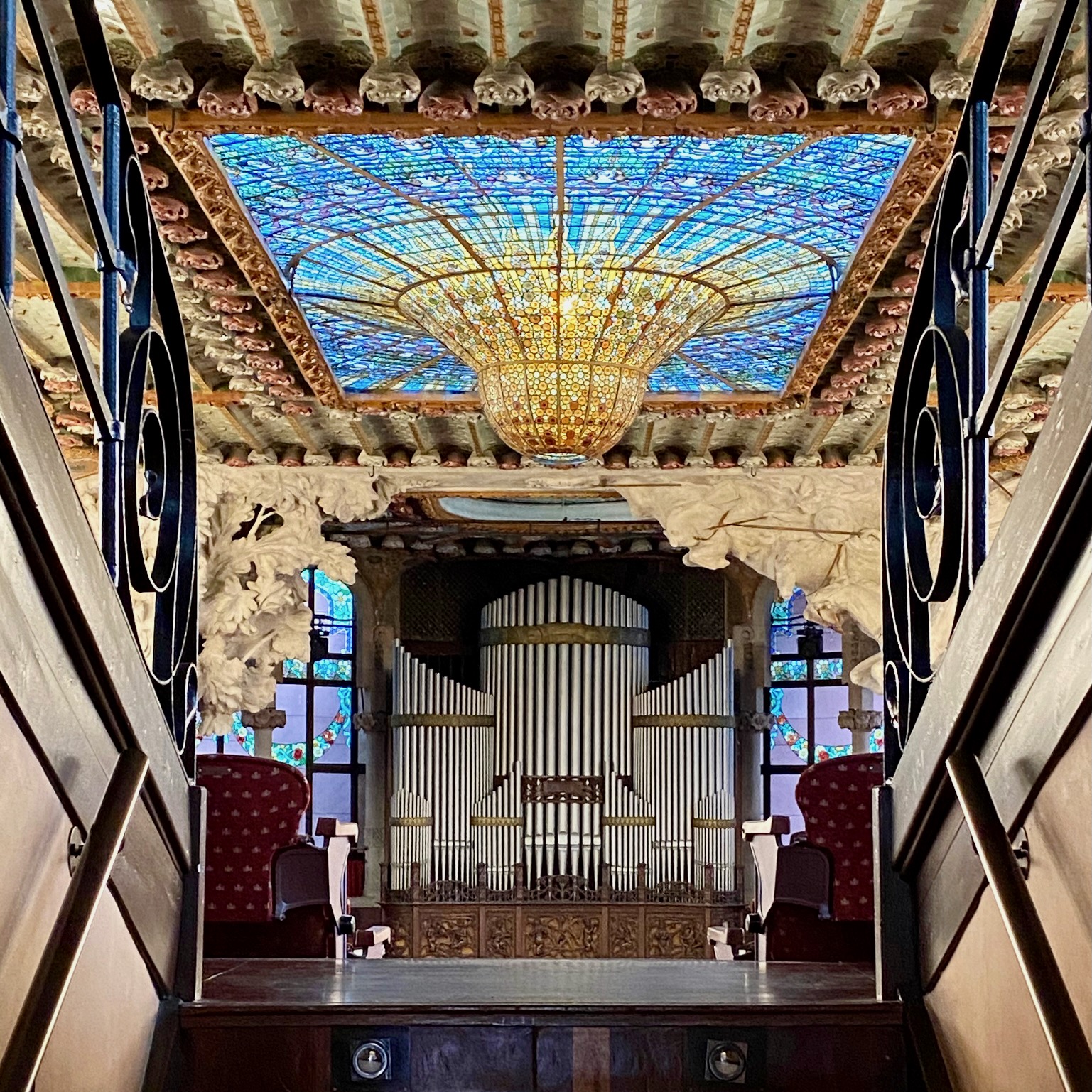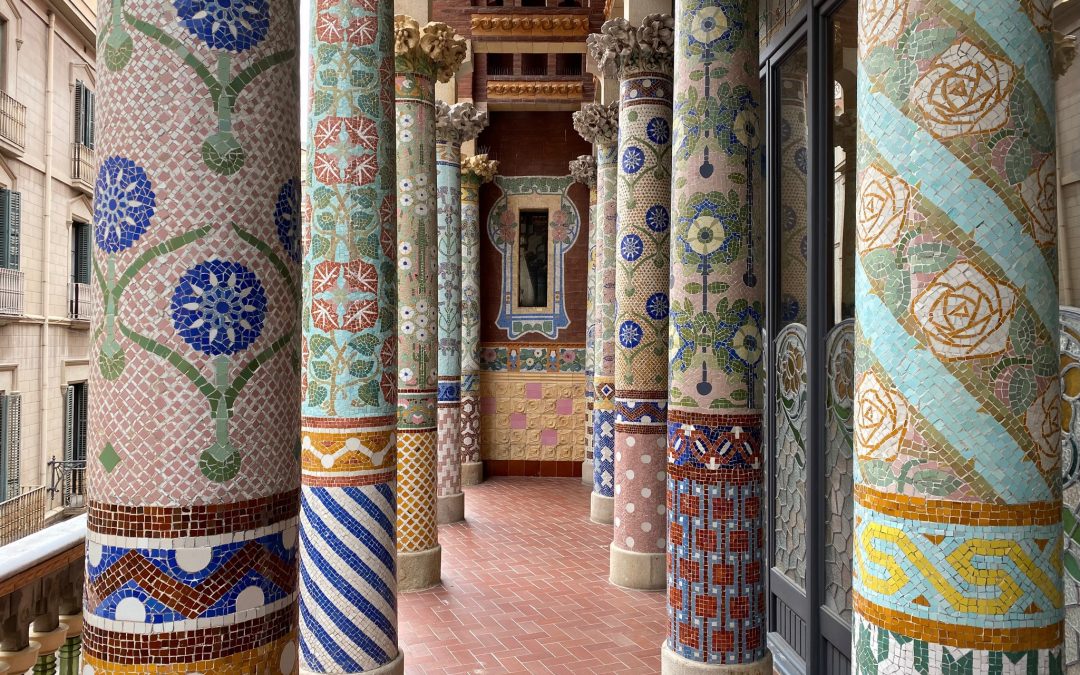Last Updated on July 26, 2024 by Christian Heide
Modernism or Modernisme in Catalan is an art and literature movement connected with the search of a Catalan national identity. The period associated with it was around 1888-1915 and is primarily linked to Catalonia and Barcelona. In the context of the rapid development and urban changes during the industrial revolution the Catalan elite – politicians, bourgeoisie and rich entrepreneurial families – intensified their efforts to revive their own national identity.
Modernism is a similar movement like Art Nouveau in France, Sezession in Austria or Jugendstil in Germany. Mainly expressed in architecture it also became important in other arts like painting, sculpture or decorative art, even in literature like poetry, fiction or drama. All have in common that the inspiration for the artistic and architectural works mostly came from nature.
What makes Catalan modernism in architecture so special?
When observing Modernist buildings in Barcelona typical elements that are used for the façades are:
- Main inspiration comes from nature.
- Curves are mainly used, much more than straight lines.
- Dynamic or organic shapes are preferred over static forms.
- A rich decoration with floral and other natural motifs is typical.
- Materials such as ceramics, mosaic tiles and glass are predominant.
- Red brick stone and elaborate metal works are frequent.
- Sculptures and motifs are often related to important Catalan legends and historical figures.
As you stroll through Barcelona, you will find that many original buildings still exist and have often been beautifully restored. In the Eixample district you can also find fascinating doors and entrances in the Modernist style. If you stroll through the Golden Triangle, you think you are in a modernist open-air museum. The Golden Triangle is roughly formed by the three large streets Gran Via, Aribau and Diagonal.



Who are famous architects of Modernism?
Around the turn of the century Barcelona was in a new Golden Age. A lot of enterprising families became very rich during the Industrial Revolution and wanted to show their richness. Thus they did not spare no expense. At the same time Barcelona underwent a rapid growth in population that led to an extension of the city. The quarter of the so called Eixample was planned and realised. A lot of building space became available. This situation was ideal for architects in Barcelona: There was a lot of demand for their services, a lot of capital was available and usually architects were not limited in their ideas as they were supposed to create an extravagant legacy. No wonder that Modernism produced so many brilliant architects. Who of them became the most famous ones?
When talking about Modernist architects we should distinguish between two groups: the great 3 on the one hand and dozens of other architects on the other hand. Among the great 3 Antoni Gaudí became the most famous architect of his time. Especially today there is even a Gaudí hype around all his buildings in Barcelona. But that has certainly not always been the case. When Gaudí was still alive many of his works were controversially discussed in Barcelona by residents, officials and newspapers alike. Nevertheless, when comparing Gaudi´s work with other contemporary architects of his time he often went beyond what was common. He is creativity was endless. He was a true genius.
Many visitors focus solely on Gaudi´s work when coming to Barcelona. However, there is so much more to see. Next to Gaudí another impressive architect was Lluís Domènech I Montaner who left a legacy over 30 buildings in Barcelona and all of Catalonia. He was also a professor and Gaudi´s teacher and became an important Catalan politician.
The third great architect of that time is Josep Puig I Cadafalch. Also this architect created more than 30 principal works during his life. Among his most famous buildings you will find Casa Amatller and Casa de les Punxes.
It is worthwhile mentioning a couple of architects within the group of the dozens of others: Josep Fontserè I Mestres, Enric Sagnier I Villavecchia, Salvador Valeri I Pupurull, Josep Maria Jujol or Manuel Sayrach I Carreras.
Top 10 Modernist Buildings in Barcelona that you must see
When strolling through Barcelona you will notice that many Modernist buildings are still existing and that they often are beautifully restored and in their original state. We put a list together of buildings that you cannot miss out on:
- Sagrada Familia – though a very touristy spot you cannot miss out on this breathtaking church that was Gaudi´s lifetime work
- Recinte Modernista Sant Pau – a stunning hospital that is a hidden gem not far away from Sagrada Familia by Lluís Domènech i Montaner.
- Casa Batlló – Gaudi´s masterpiece of a residential building
- Palau de la Música – the grand concert hall of Barcelona by Lluís Domènech i Montaner.
- Casa Amatller – a Modernist version of a medieval palace, just next to Casa Batlló by Josep Puig I Cadafalch.
- Palau Guëll – Gaudi´s first residential building constructed for his patron, Eusebi Guëll
- Casa Vicens – another magnificent example of Gaudi´s genius
- Colonia Guëll – just outside of Barcelona you will find a working class village with many Modernist buildings
- Casa de les Punxes – a fairy tale residential building built by a rich entrepreneur for his three children who engaged Josep Puig I Cadafalch.
- Casa Lleó Morera – overloaded with flowers it is the third great work within the Block of Discord at the Passeig de Gracia and a masterpiece of Lluís Domènech i Montaner.



Things to do and private tour tips
Here are some must-do´s in Barcelona during your trip:
Gaudí & Barcelona Legends – Immerse with us into captivating legends from the past that can be seen everywhere in the city once you know them. Understand how architects like Gaudí were inspired by them and left a lasting impact on Barcelona.
Explore hidden streets with a friend – a stroll through the labyrinth of little streets of the historic center of Barcelona where you will encounter several examples of Modernist buildings.
Feel like Gaudí – Tour and Mosaic Workshop – learn about the most famous buildings along the Passeig de Gracia during a two hours walking tour before having your hands-on experience in a mosaic workshop using the same technique as Gaudi. This is an ideal experience not only for families but also for team building activities.

